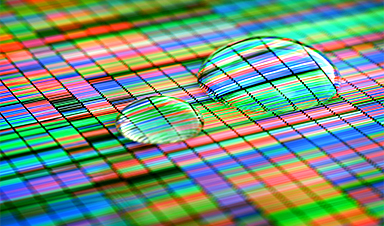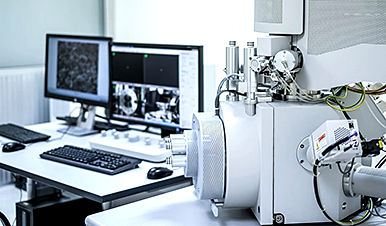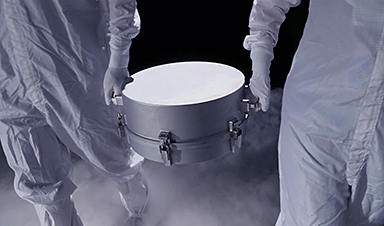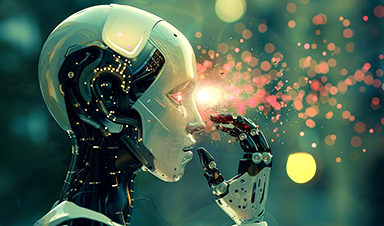The laborious, uneconomical process of sequencing DNA molecules – a technology used to identify, diagnose, and perhaps find treatments for diseases – could become much faster and cheaper thanks to a new nanofabrication technique that exploits nano-sized air-gaps, or nanocracks, in electrically conductive materials.
A doctoral student in Micro and Nanosystems at KTH, Valentin Dubois, presented the new method in his dissertation, explaining that the results offer a potential alternative to existing optical DNA sequencing processes, which depend on bulky, costly equipment. The research was done in partnership with his supervisors.
Our method can, in principle, enable the development of DNA sequencers consisting of a simple USB-connected docking station, in a size equivalent to a small smartphone, costing less than €100. And anyone could use it without any special training. Hopefully, it will be possible to determine a person’s genetic makeup in less than an hour, instead of days, as is the case nowadays. Valentin Dubois
Nanogap electrodes, essentially a pair of electrodes having a nanometer-sized gap between them, are gaining attention as scaffolds to explore, sense, or harness the smallest stable structures located in nature: molecules. In his dissertation Crack-junctions: Linking the gap between nano electronics and giga manufacturing, Valentin Dubois explains how to apply the exceptional properties of nanocracks in electrically conductive materials as a new means of forming electrode pairs possessing nanometer-wide air gaps
Image Credit: Envato/ Alias studio
News This Week
How to Assess Nanotoxicity: Key Methods and Protocols
With their high surface area and enhanced physicochemical properties, nanomaterials play a critical role in drug delivery, consumer products, and environmental technologies. However, their nanoscale dimensions enable interactions with cellular components in complex and [...]
Nanotech drug delivery shows lasting benefits, reducing need for repeat surgeries
A nanotechnology-based drug delivery system developed at UVA Health to save patients from repeated surgeries has proved to have unexpectedly long-lasting benefits in lab tests – a promising sign for its potential to help human patients. [...]
Scientists Just Found DNA’s Building Blocks in Asteroid Bennu – Could This Explain Life’s Origins?
Japanese scientists detected all five nucleobases — building blocks of DNA and RNA — in samples returned from asteroid Bennu by NASA’s OSIRIS-REx mission. NASA’s OSIRIS-REx mission brought back 121.6 grams of asteroid Bennu, unveiling nitrogen-rich organic matter, including DNA’s essential [...]
AI-Designed Proteins – Unlike Any Found in Nature – Revolutionize Snakebite Treatment
Scientists have pioneered a groundbreaking method to combat snake venom using newly designed proteins, offering hope for more effective, accessible, and affordable antivenom solutions. By utilizing advanced computational techniques and deep learning, this innovative [...]
New nanosystem offers hope for improved diagnosis and treatment of tongue cancer
A pioneering study has unveiled the Au-HN-1 nanosystem, a cutting-edge approach that promises to transform the diagnosis and treatment of tongue squamous cell carcinoma (TSCC). By harnessing gold nanoparticles coupled with the HN-1 peptide, [...]
Global Trust in Science Is Stronger Than Expected – What’s Next?
A landmark global survey conducted across 68 countries has found that public trust in scientists remains robust, with significant support for their active involvement in societal and political matters. The study highlights the public’s [...]
Microplastics in the bloodstream may pose hidden risks to brain health
In a recent study published in the journal Science Advances, researchers investigated the impact of microplastics on blood flow and neurobehavioral functions in mice. Using advanced imaging techniques, they observed that microplastics obstruct cerebral blood [...]
AI Surveillance: New Study Exposes Hidden Risks to Your Privacy
A new mathematical model enhances the evaluation of AI identification risks, offering a scalable solution to balance technological benefits with privacy protection. AI tools are increasingly used to track and monitor people both online [...]















Leave A Comment